The editors of the 1983 revised Gita did not believe that they actually interpolated philosophy or style.* Their idea was to improve both translations and purports by transposing and clarifying portions of old manuscripts, etc. existing prior to the one finally submitted to Macmillan in 1972. Truly, many of the grammatical, spelling, format and historical inaccuracies corrected in the revision would have been approved by Srila Prabhupada himself had he been consulted.
Be that as it may, Srila Prabhupada never instructed anyone to use a procedure of re-visiting and researching old manuscripts or dictations to revise future printings of his first editions. On the other hand, recordings made from 1972 until 1977, six years, demonstrate how Srila Prabhupada often personally read excerpts from the Gita in classes, room conversations, engagements, etc. Many times he also instructed devotees present to read aloud as he listened. There is no evidence indicating that he ordered extensive revisions for the next printing. As the current chief editor wrote; “To my knowledge, Srila Prabhupada never asked us to re-edit the book.” ( letter to Amogha Lila, July, 1986 ) .
Interestingly enough, none of the scholars, educators, professors and other reviewers of the Gita called for it either. From 1972 until 1983 we don’t find requests from professionals for a revision to a higher standard. Nor do we hear any demand from devotees in general for such a thorough revision. In fact, the editors state in “A Note About the Second Edition” found in the BBT revised editions: “Yet their effort to publish Srila Prabhupada’s work was a success, and the Bhagavad-gita As It Is has become the standard edition for scholars and devotees around the world.” Still, after eleven years of documented success, the Gita was extensively re-worked. Why? What is the reason?
The editors continue their explanation: “For this second edition, however, Srila Prabhupada’s disciples had the benefit of having worked with his books for the last fifteen years. The English editors were familiar with his philosophy and language, and the Sanskrit editors were by now accomplished scholars. And now they were able to see their way through perplexities in the manuscript by consulting the same Sanskrit commentaries Srila Prabhupada consulted when writing Bhagavad-gita As It Is. The result is a work of even greater richness and authenticity… In places the translations, though already correct, have been revised to come closer to the original Sanskrit and Srila Prabhupada’s original dictations…”
The editors are claiming the benefit of 15 years work, which would mean 1968 until 1983, the year of the revision. However, the value of those benefits is uncertain, because in June, 1977 Srila Prabhupada severely chastised the editors for changes to his Isopanisad and Bhagavatam. He described the editors as rascals (a term he usually reserved for atheists, material scientists and politicians), and called them “dangerous” at least six times in ten minutes of discussion. Just five months before his disappearance, Srila Prabhupada made this a major issue for the Society.
The same basic issue came up in 1983 and has continued more or less for the last 25 years. But for us, now, who will decide who is right and who is wrong? One side says “responsible editing,” the other says “irresponsible, unauthorized, etc.” But who is right and who is wrong? Who will decide?
So now we must come to the point of reason. Is it reasonable to conclude that just five or six years after deserving that 1977 chastisement, editors could have emerged as “accomplished scholars” –by 1983? One editor escaped chastisement. Still, isn’t six years a short time for everyone to turn up as “accomplished scholars?” But even if all the editors had been studying Sanskrit for 30 years by 1983, is it plausible that such editors could be able to dive into the superexcellent depths of Sanskrit revelation, and come up with an understanding of it’s complexities—the same complexities—understood by previous acaryas? Was this the prerogative of such disciples, that they could be “able to see their way through perplexities in the manuscript by consulting the same Sanskrit commentaries Srila Prabhupada consulted when writing the Bhagavad-gita As It Is? Is it possible?
And further, “In places the translations, though already correct, have been revised to come closer to the original Sanskrit…” Here the implication is that the editors in 1983, whoever they were, thought they could interpret the original Sanskrit texts comparatively as well as Srila Prabhupada himself, or at least well enough to put their new realizations in his book under his name. And, that they could understand the same complexities understood by previous acaryas (presumably Sridhar Swami et. al.) simply by using the same Sanskrit commentaries Srila Prabhupada used. Is this credible? Is it reasonable to conclude that such editors were capable of producing “a work of even greater richness and authenticity?” Or that translations “already correct” could have been revised to even more correctness by them? Was all this perfection really possible by 1983?
May be, if they had received authorizations and blessings from Srila Prabhupada in 1977 before he disappeared, but that didn’t happen. It is known from that recorded conversation of June, 1977, that when Tamal Krsna suggested to Srila Prabhupada Jayadwaita check any changes before reprinting, Srila Prabhupada countered: “But they are doing without any authority!” In other words, no need for Jayadwaita to become an inspector of changes because nobody was authorized to make such changes in the first place! Tamal had already said to Srila Prabhupada: “Your original work that you’re doing now, that is edited by Jayadwaita. That’s the first editing.” Srila Prabhupada had answered, “He is good.
So Srila Prabhupada, in the midst of all the turmoil, made it clear that he was satisfied with Jayadwaita’s work. Yet a “first editing” is entirely different from re-editing an already finished or printed work, which is what the others were doing. Srila Prabhupada never authorized anyone, including Jayawaita or Pradyumna to do that with the Bhagavad-gita then or in the future.
The extent of Srila Prabhupada’s disappointment in this matter can not be underestimated. He said, after being informed of the changes in the Isopanisad, “I know what these rascals are doing. What can be done? How they can be relied on?” And later, “It is starting. What can I do? These cannot…These rascals cannot be educated. Dangerous. Little learning, dangerous…What can I do? Ultimate it goes for editorial…”
In the 3rd Canto (3.4.26), Srila Prabhupada writes, “Although one may be well versed in transcendental science, one should be careful about the offense of maryada-vyatikrama, or impertinently surpassing a greater personality. According to scriptural injunction one should be very careful of transgressing the law of maryada-vyatikrama because by so doing one loses his duration of life, his opulence, fame and piety and the blessings of all the world. To be well versed in the transcendental science necessitates awareness of the techniques of spiritual science.”
At this point the significant question emerges: Has maryada-vyatikrama, impertinently surpassing a greater personality, occurred in the process of editing and reprinting Srila Prabhupada’s books? It certainly had by 1977, according to the momentous June 22nd, 1977 room conversation about changes to the Isopanisad and Srimad Bhadavatam. Six years later, considering the exaggerated claims in the “Note About the Second Edition” and the extreme content-editing of the text, it appears to have occurred again in the 1983 “Revised and Enlarged” version of the Bhagavad-gita As It Is.
Vaisnava etiquette demands that Srila Prabhupad’s disciples, grand-disciples, et. al. always think themselves fools in front of Srila Prabhupada. But, unfortunately, sometimes some of them forget that, and dare to rush in where angels fear to tread.
* “Our editing is to correct grammar and spelling errors only, without interpolation of style or philosophy.” ( Srila Prabhupada, 02/17/70 )
x

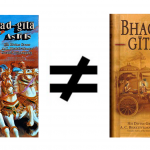



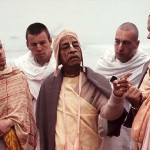


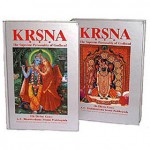


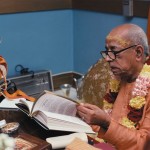
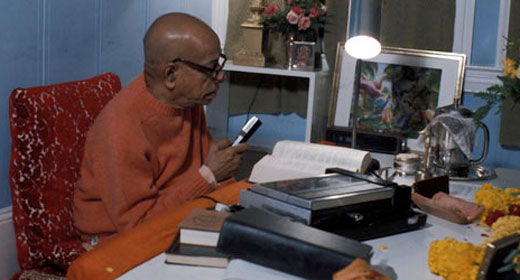
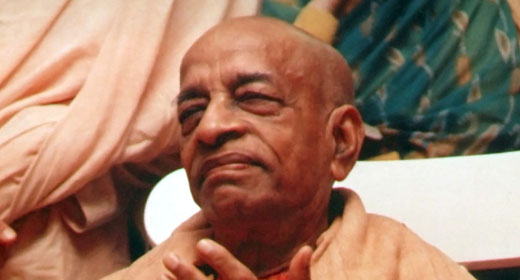
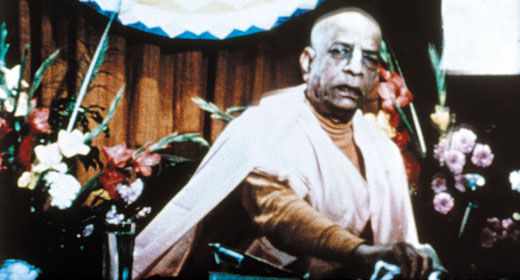
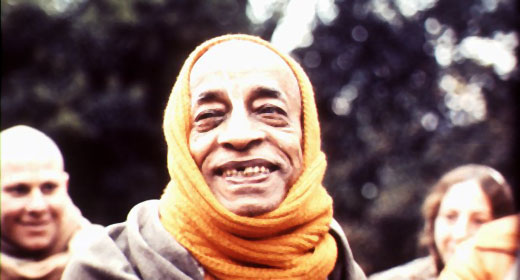
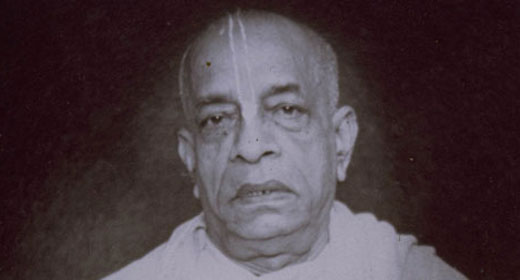
His Grace, Sriman Rupanuga das has given us very explicit explanations and documented references conveying the paramount importance of not adulterating nor interpolating Srila Prabhupada’s books. However, there are those who still may disagree and not accept the axiomatic truth that the writings of the spiritual master should not, cannot be revised nor enlarged!
It is important that in order to protect and preserve the legacy of Srila Prabhupada that his disciples or followers print and distribute his original books. Srila Prabhupada ki jai!
After publishing the abridged Bhagavad-gita As It Is with MacMillan, Srila Prabhupada immediately began to plan how to get the complete edition published. In several letters he referred to it as the “revised and enlarged” edition. The current version sold by the BBT is “revised” but it is not “enlarged,” except for a purport or two that had been misplaced before the MacMillan Gita went to press and a few Sanskrit verses that were left out of Srila Prabhupada’s purports. At the same time, though, the number of color plates was reduced to sixteen from the original 54 in the 1972 Gita, and the index was similarly diminished by 75%. So to say the current edition is “revised and enlarged” is rather misleading.
Also misleading is the BBT’s method of advertising the current version of the Bhagavad-gita. In one ad printed in Back to Godhead magazine promoting the new edition of the Gita, they include words of praise from Dr. Shaligram Shukla, Professor of Linguistics at Georgetown University, who said,
“A deeply felt, powerfully conceived and beautifully explained work…. I have never seen any other work on the Gita with such an important voice and style. It is a work of undoubted integrity…. It will occupy a significant place in the intellectual and ethical life of modern man for a long time to come.”
A beautiful tribute, indeed, but what is misleading is that although this was written in praise of the original edition of the Bhagavad-gita As It Is, the BBT is using it to promote the revised edition for which Dr. Shukla never wrote review.
Hare Krsna,
As the saying goes “the fool rushes in, where the angel fears to tread.” Some upstarts who indulged in diluting, interpreting and sabotaging the nectarine and transcendental writing of Srila Prabhupada are fit to be condemned and denounced. They are unaware of their colossal mistake and folly.
Such fools are playing to the gallery on the pretext of improving and changing Srila Prabhupada’s writing.
The founder of 108 temples gleaned and wrote the books in such and simple in lucid manner so that even a layman can fathom and comprehend it. Srila Prabhupda is as good as mahamuni Srila Vyasadeva and precisely knew how to present the transcendental literature to fallen, dull and sinful souls for their benefit and profit. But, these kali chela are trying to supersede Srila Prabhupada and carving out their path to hell and misleading millions of innocent leaders across the globe.
The so called disciples or vaisnavas who are kali chela in the garb of devotees are rendering incalculable damage to Iskcon society and its transcendental message. The travesty of following the parampara succession are speaking for itself and ramifications are wide out.
Let us not get intimidated and bogged down by the by the action of these perverted people. With unflappable energy, relentless attitude and divine mercy of Srila Prabhuapada and Sri Cautanya Mahaprabhu; we will continue to spread their message without dilution and compromise following in their all auspicious foot steps. Haribol!
Regards
Natrahan s